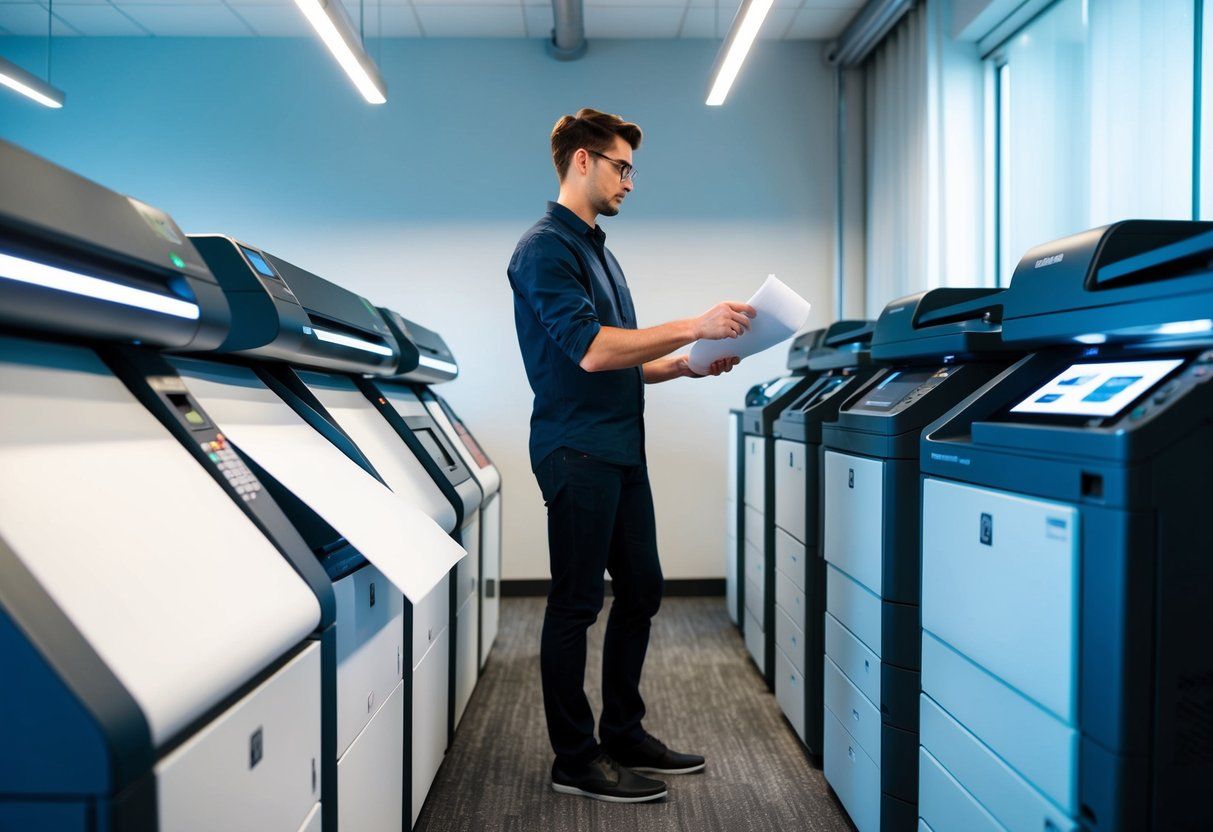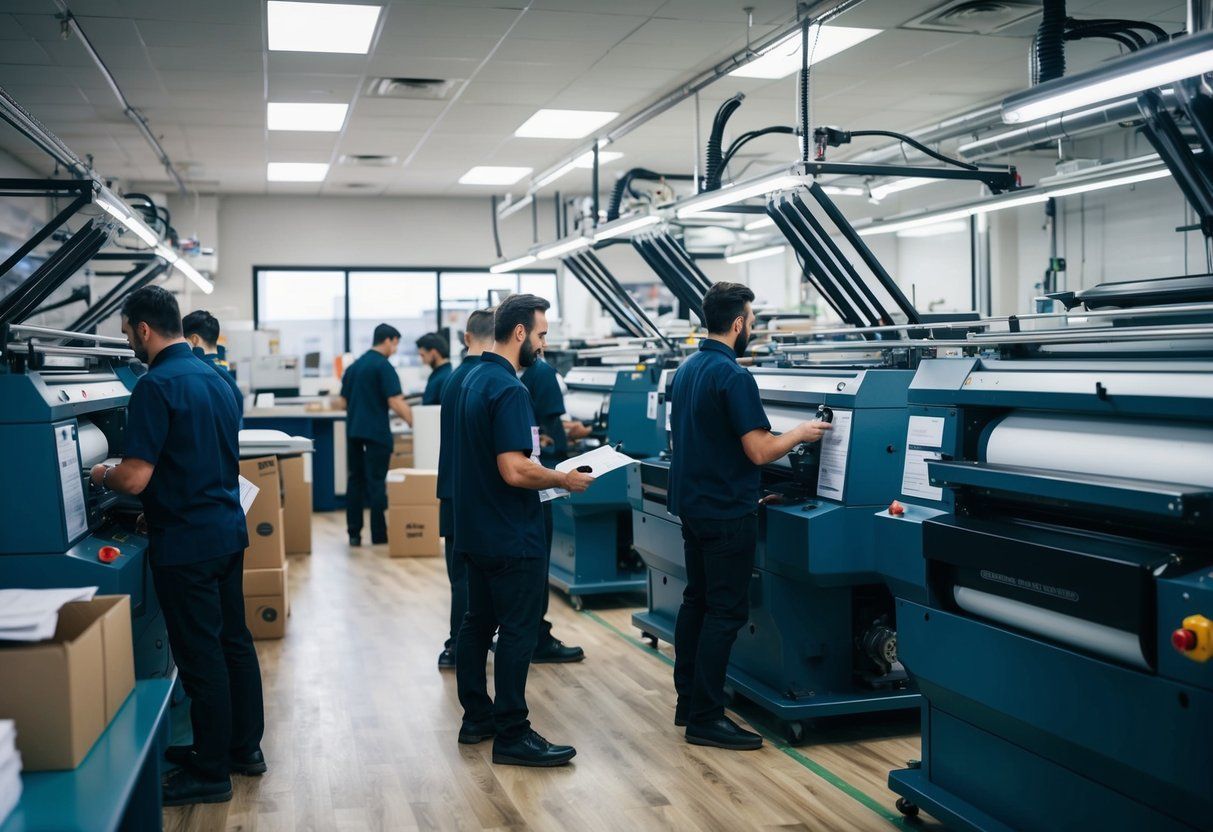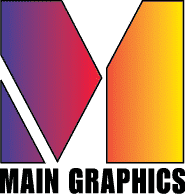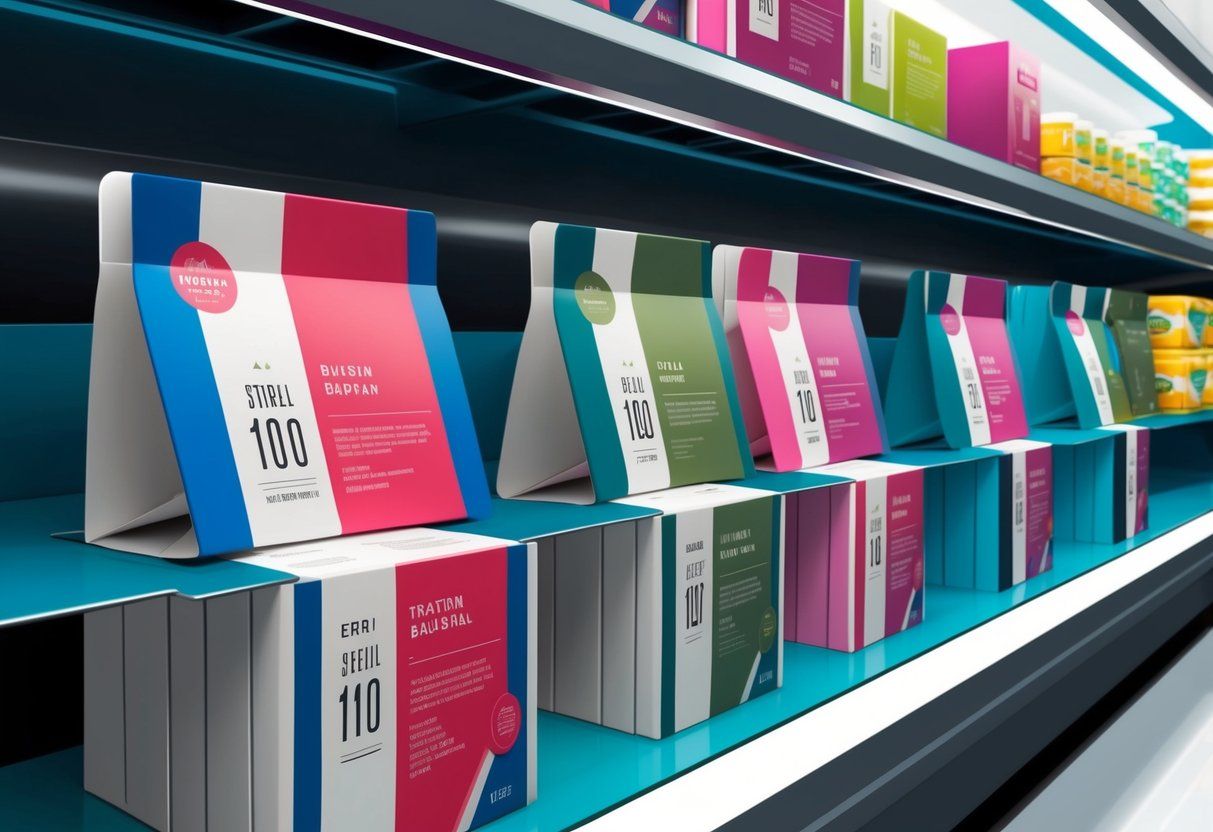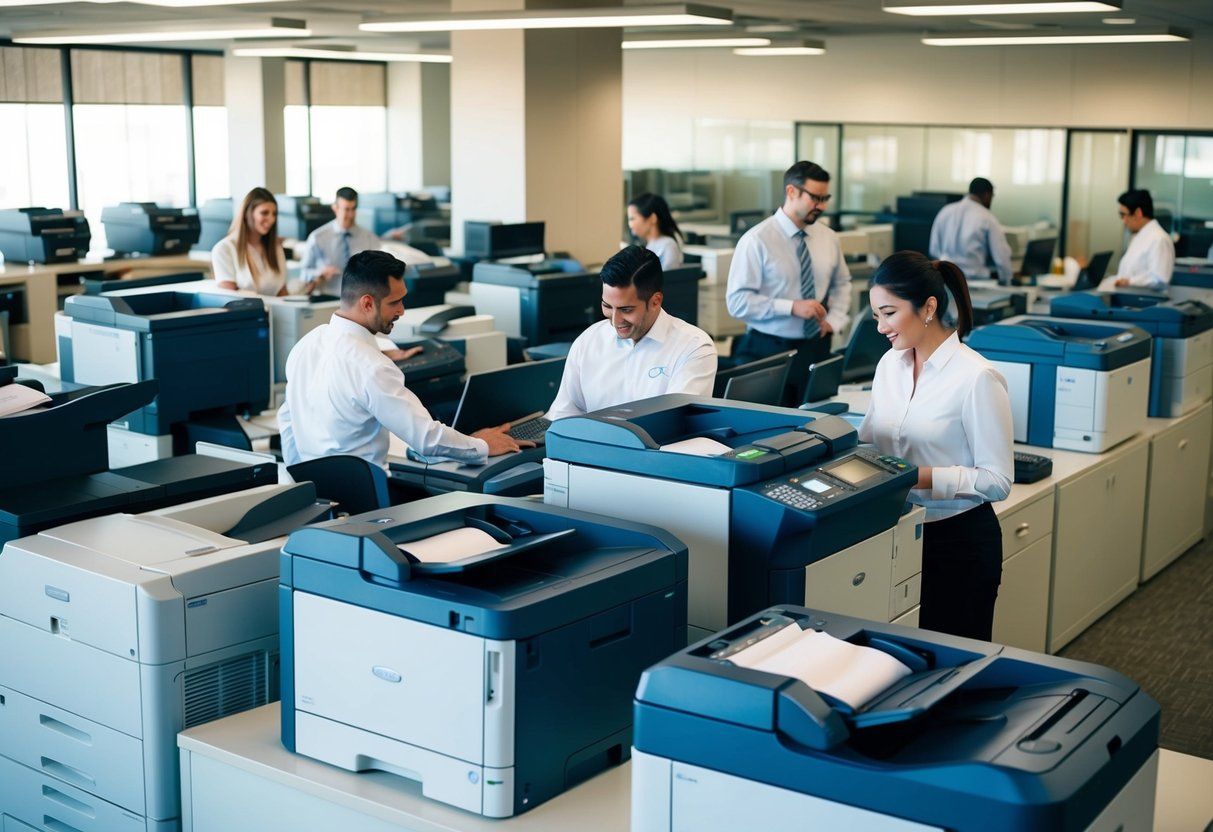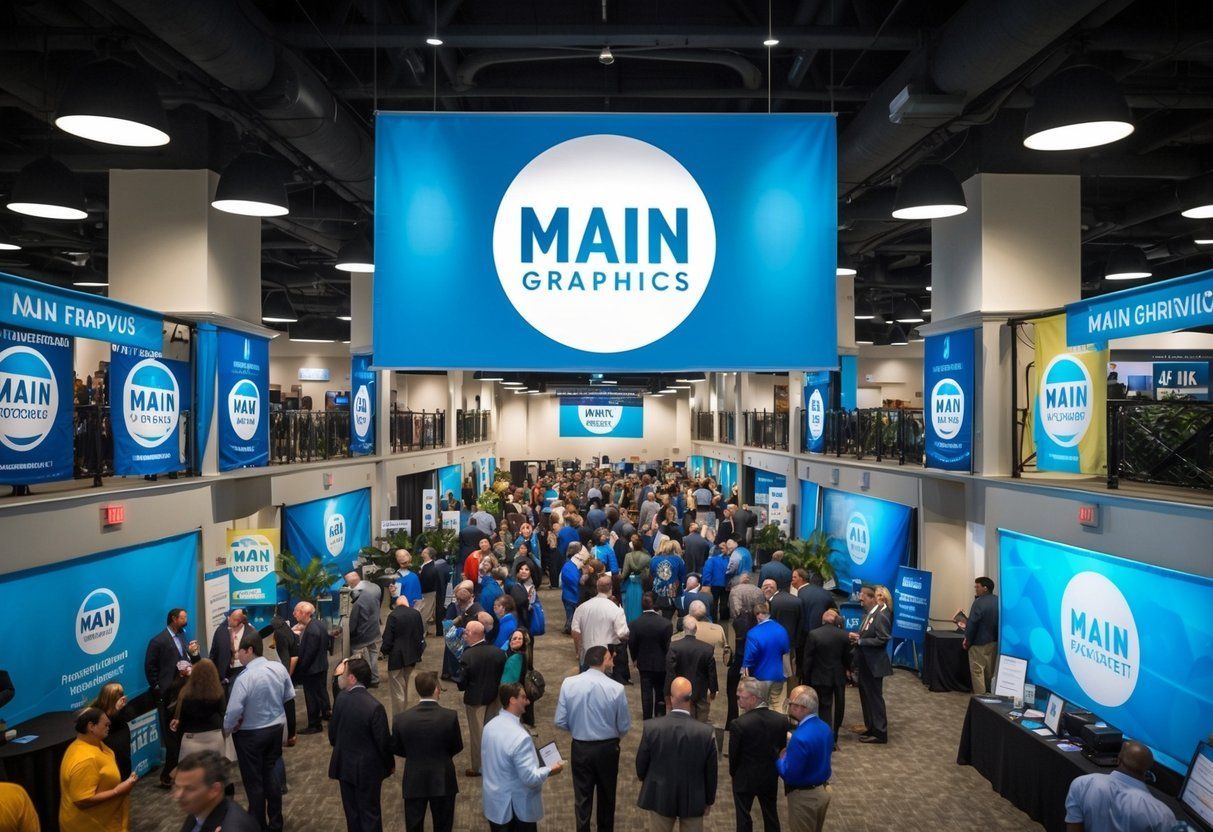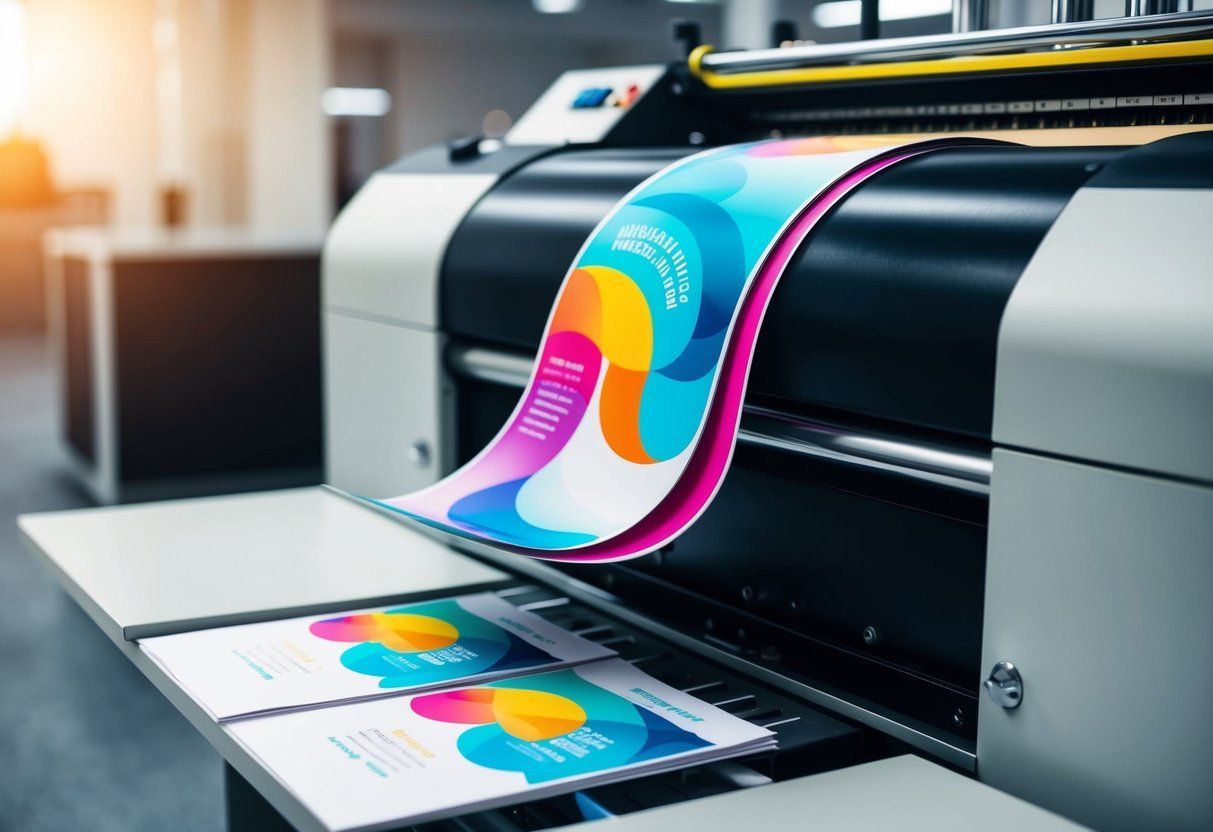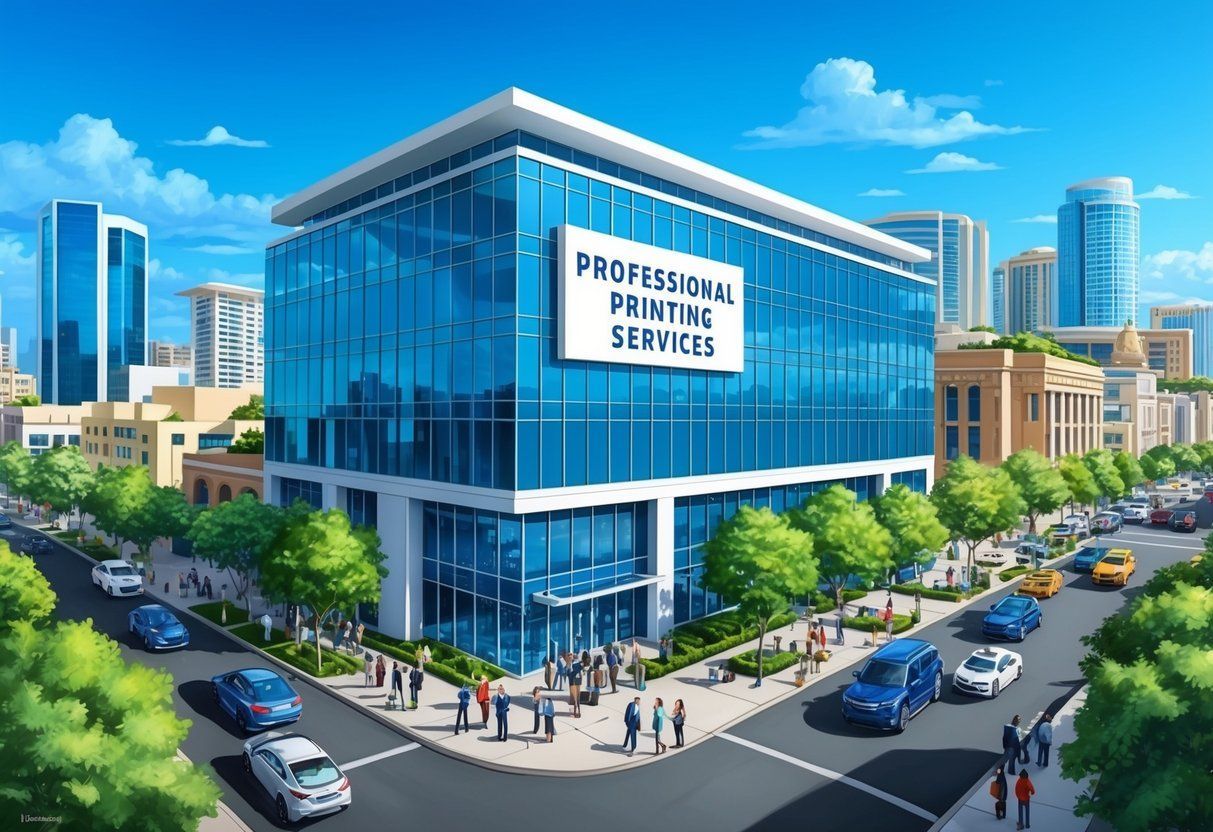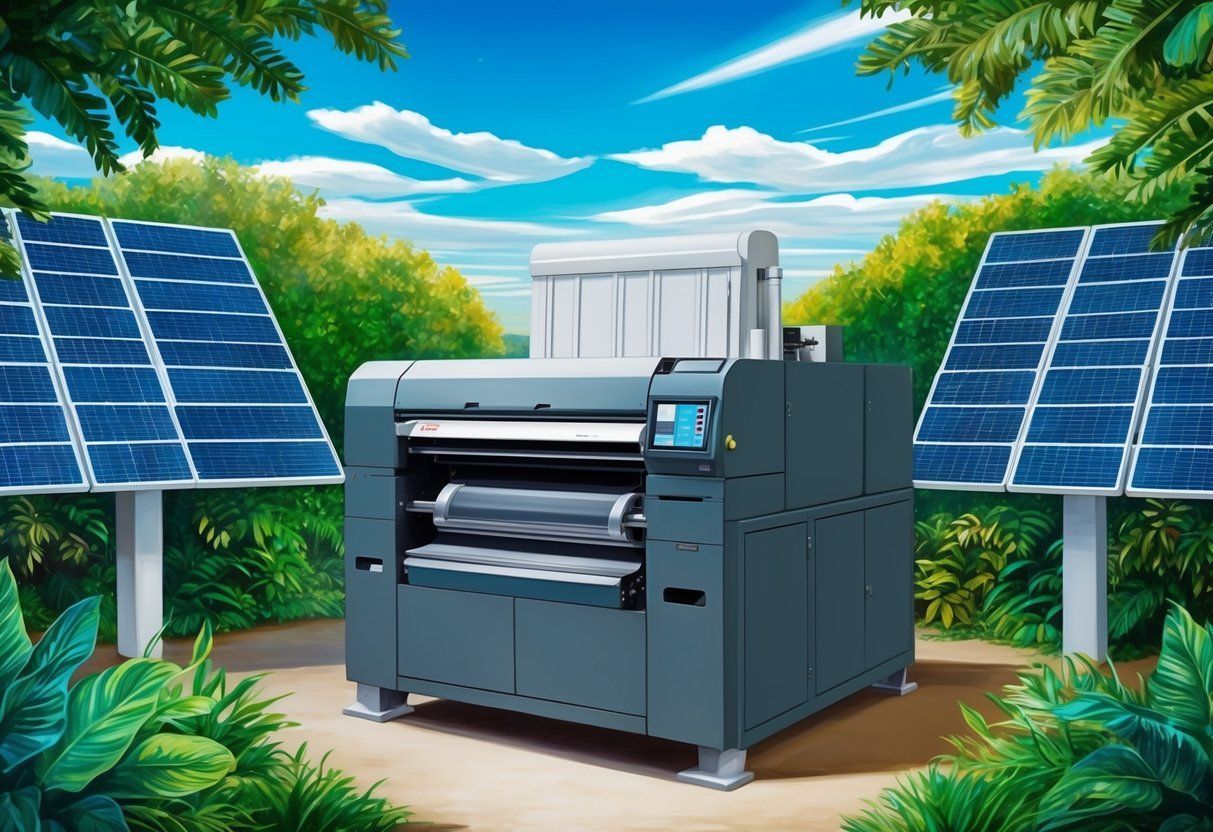Large Format Printing Services Overview: Key Solutions and Applications
Large formatprinting plays a crucial role in the world of graphics and signage. Businesses use this service to create impactful visual elementsthat can enhance brand visibility and engage audiences. From eye-catching banners to detailed posters, large format printing offers various options tailored to meet different needs.
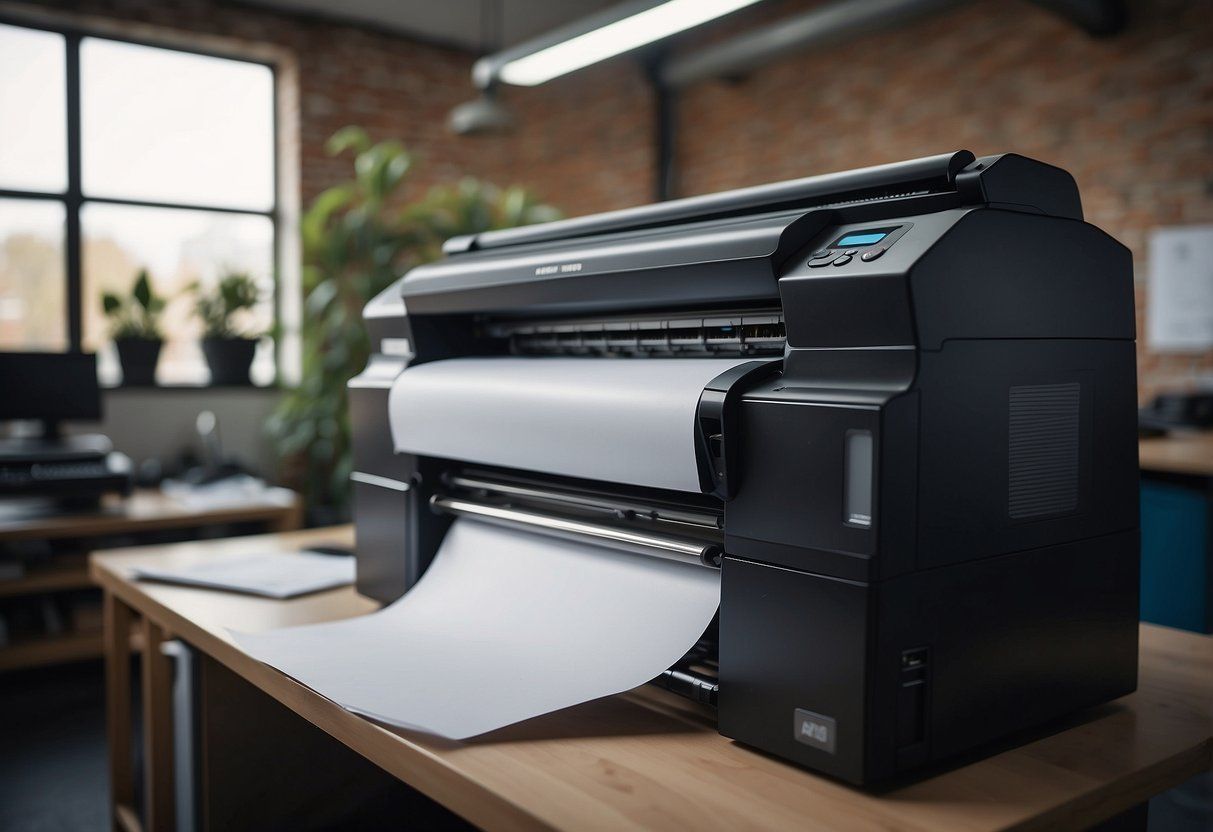
Understanding the materials and technologies involved is key to making informed choices. From different substrates to advanced printing techniques, this service provides versatility that can fit almost any project. The right use of large format printing can transform spaces and attract attention effectively.
Whether for marketing campaigns or special events, the applications are vast. Large format printing not only increases brand awareness but also creates memorable experiences for customers.
Key Takeaways
- Large format printing enhances brand visibility with impactful graphics.
- Different materials and technologies provide versatile options for projects.
- It has wide applications, making it useful for various marketing efforts.
Understanding Large Format Printing
Large format printing refers to a specialized area of printing that deals with large materials and graphics. It includes various services that cater to different needs in advertising, signage, and displays. This process is essential for businesses looking to make a big impact visually.
Definition and Scope
Large format printing can be defined as a printing method that produces items larger than standard print sizes. Typically, this includes prints that are 24 inches wide or more. It is used for a variety of products, including banners, posters, and wall graphics.
Scope wise, large format printing is often categorized as wide format or grand format. Wide format refers to items that are usually up to 60 inches wide, while grand format exceeds that. Each category has its unique applications and requirements, making it vital for businesses to choose the right type based on their specific needs.
Large Format Printing Services
Large format printing services encompass a range of offerings aimed at different industries. These services include creating eye-catching displays, advertising solutions, and promotional items. Companies often use these services for trade shows, retail, and outdoor advertising.
Key services in large format printing include:
These services leverage advanced printing technologies , such as inkjet and dye-sublimation, to produce high-quality visuals. Large format printing is essential for making strong visual statements, and it serves diverse needs across multiple sectors.
Materials and Substrates
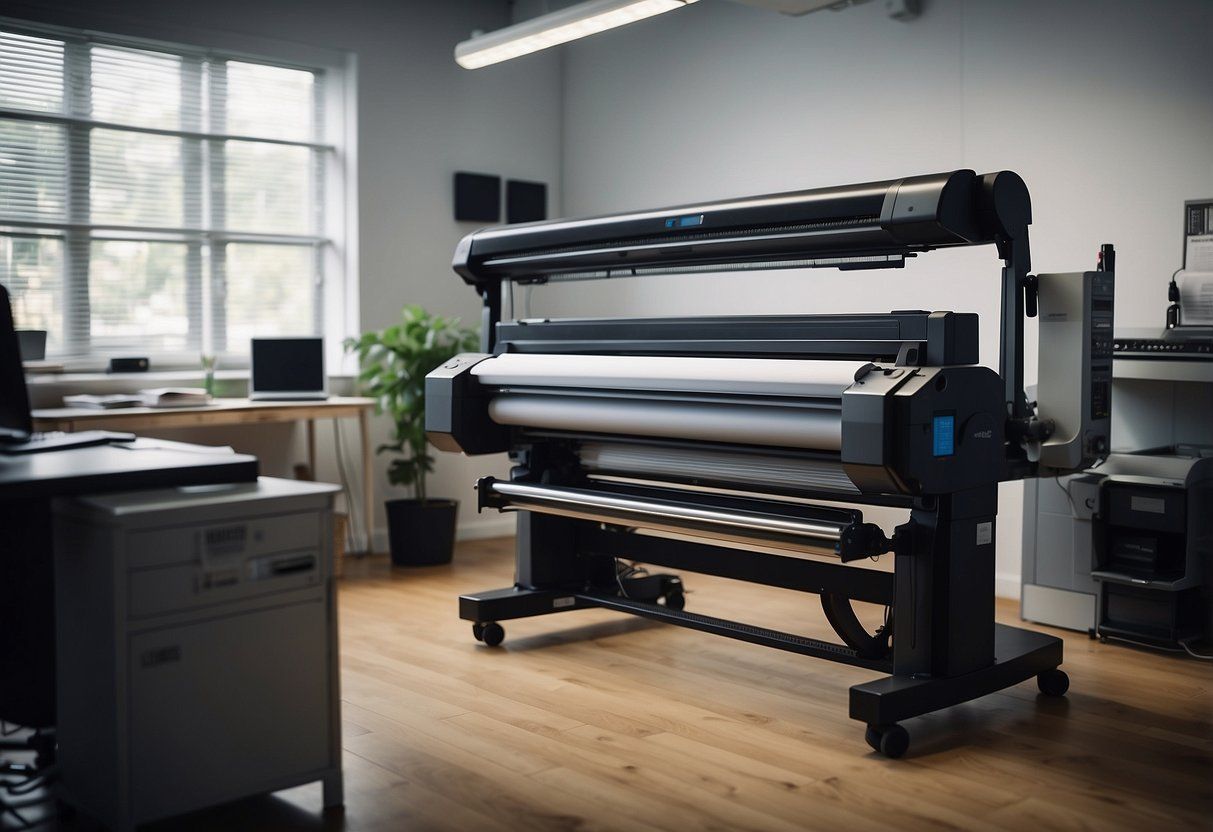
Different materials and substrates are essential for large format printing. Choosing the right type affects the quality and appearance of the final product. Various options cater to specific uses and environments, making selection important.
Commonly Used Materials
Some common materials used in large format printing include:
- Vinyl : Durable and flexible, perfect for banners, decals, and outdoor signage.
- Canvas : Ideal for art prints and high-quality displays , canvas provides a textured look.
- Metal : Often used for professional signage and art, metal substrates offer a sleek and modern finish.
- Wood : Provides a rustic feel and is used for unique projects like custom signs.
- Acrylic : Clear and glossy, acrylic is popular for dimensional signs and displays.
- Cloth : Lightweight and easy to transport, cloth is used for displays and printed fabric products.
These materials each bring specific benefits to various printing projects.
Choosing the Right Substrate
Selecting the right substrate depends on several factors, including the intended use and environment. Consider the following:
- Purpose : Is it for indoor or outdoor use? Vinyl is often better for outdoor projects.
- Durability : For heavy wear, materials like metal and acrylic might be best.
- Appearance : A canvas or cloth substrate can enhance visual appeal for art and displays.
- Budget : Costs can vary widely, so knowing the budget helps narrow choices.
Assessing these factors will guide in making an informed decision, ensuring the print achieves the desired effect.
Technologies and Techniques
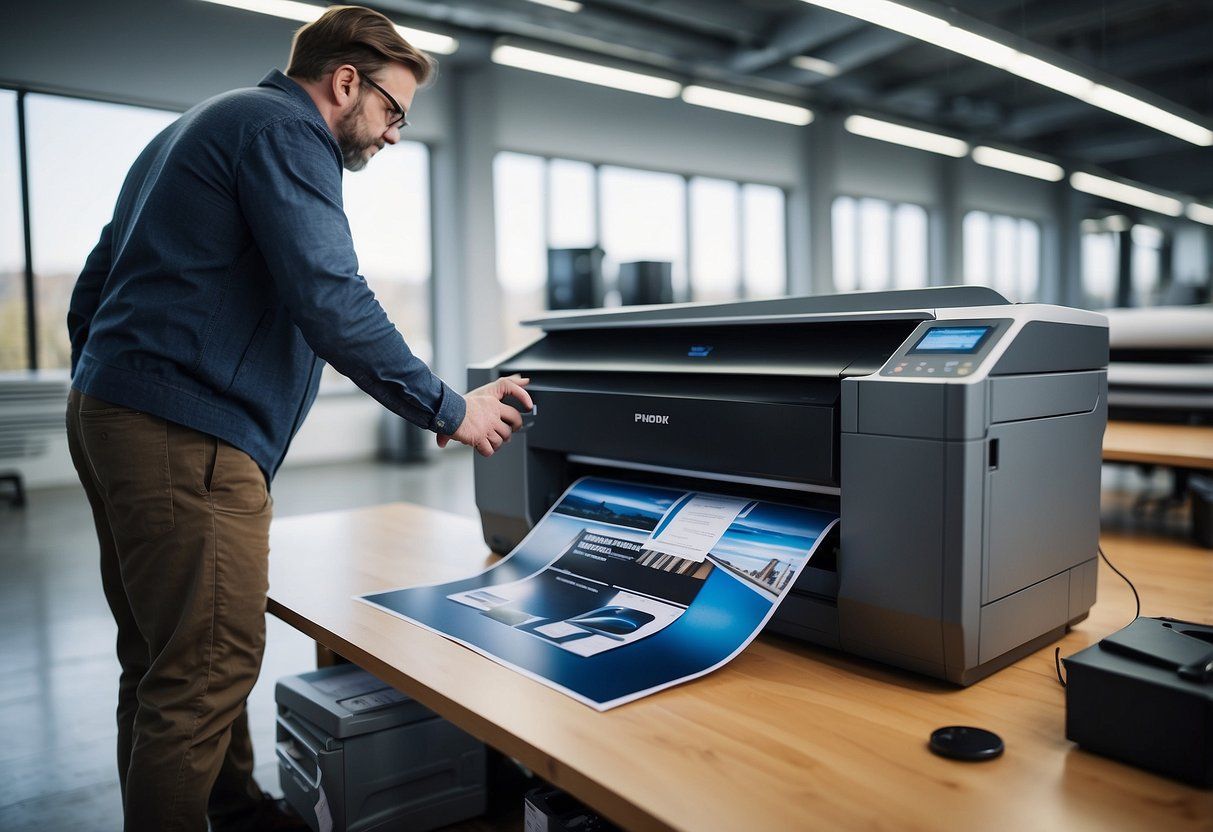
Large format printing relies on several key technologies and techniques that enhance the quality and efficiency of the final products. This section explores various printing methods, the choice between digital and offset printing, and the types of ink used.
Printing Techniques Overview
There are several printing techniques used in large format printing. Inkjet printing is one popular method, employing small droplets of ink that are sprayed onto the material. This technique allows for high-resolution prints and is suitable for a range of substrates, including vinyl and canvas.
UV printing is another technique, where ultraviolet light cures the ink instantly, enabling vibrant colors and faster production times. It is beneficial for printing on non-porous materials.
Screen printing is effective for large runs and produces bold colors. It involves forcing ink through a mesh screen, making it ideal for banners and posters. Each technique has its unique advantages and is chosen based on project requirements.
Digital vs. Offset Printing
Digital printing offers flexibility and quick turnaround times. It allows for on-demand printing and customization, making it ideal for smaller runs or projects needing variation. Inkjet printers commonly used in digital printing are capable of producing high-quality images with a wide range of colors.
In contrast, offset printing is more suitable for larger volumes. It transfers ink from a plate to rubber rolls, which then apply the ink to the printing surface. This technique generally results in lower costs per unit as the quantity increases but requires more time for setup.
Choosing between digital and offset printing depends on project size, budget, and timeline.
Ink Technology and Types
Ink is a vital component of printing. It influences both the final appearance and durability of printed materials. There are several types of ink, including water-based and solvent-based inks.
Water-based inks are environmentally friendly and less hazardous. They are commonly used for indoor applications due to their lower durability.
Solvent-based inks provide greater durability and are often used for outdoor signage because they resist fading from UV light.
Inks may also be categorized as eco-solvent or UV-curable , with each type designed for specific applications and substrate compatibility. Understanding these options helps in selecting the best ink for any large format printing project.
Applications of Large Format Printing
Large format printing is highly versatile and finds applications in various fields. It plays a key role in enhancing visibility and engagement through diverse mediums. The following subtopics highlight essential applications of large format printing.
Signage and Advertising
Large format printing is crucial for signage and advertising. It helps businesses create impactful visuals that grab attention.
Types of signage include:
- Outdoor Billboards : These large displays can reach a wide audience and promote brands effectively.
- Retail Signage: Stores utilize graphics and banners to communicate sales or brand identity.
The vibrant colors and high-quality images produced by large format printers can enhance customer experiences. Businesses often choose materials like vinyl for durability, ensuring signage stands out in various weather conditions.
Trade Show and Event Displays
Trade shows and events thrive on impactful displays. Large format printing provides essential tools for businesses to showcase their offerings.
Key components include:
- Trade Show Displays : These can range from banners to pop-up stands that attract attendees.
- Point-of-Purchase Displays: Effective for promoting products at events, these displays help enhance the shopping experience.
These displays often use eye-catching visuals to convey messages quickly. They are designed to be portable, allowing for easy setup and dismantling, which is crucial for busy event schedules.
Custom Vehicle Wraps
Vehicle wraps are another application of large format printing that allows businesses to turn their vehicles into mobile advertisements.
Benefits of vehicle wraps include:
- High Visibility: Vehicles moving in high-traffic areas can promote brands effectively.
- Durability: These wraps are designed to withstand weather conditions and maintain vibrancy over time.
Custom graphics can be tailored to fit any vehicle size and shape. This approach not only promotes business services but also contributes to brand recognition on the go.
Retail and Interior Design
In retail and interior design, large format printing enhances aesthetic appeal and brand presentation.
Applications include:
- Wall Murals: Large graphics can transform ordinary spaces into engaging environments.
- Window Displays : Printed materials can attract customers with eye-catching designs.
The flexibility of large format printing allows for creative installations. Businesses benefit from using thematic designs that resonate with their target audience and elevate the shopping experience.
In summary, large format printing serves multiple sectors effectively. Businesses can leverage these applications to enhance visibility and engage their audience more dynamically.
Design and Visual Elements
Design and visual elements play a key role in large format printing. Effective graphic design enhances brand visibility and creates a strong visual impact. It is essential to consider components such as resolution, color reproduction, and the use of suitable design software to achieve the best results.
Graphic Design for Large Formats
Graphic design for large formats is different from standard sizes. Designers must account for the scale, ensuring that text and images remain legible from a distance. Key aspects include:
- Simplicity : Keeping designs uncluttered helps convey messages efficiently.
- Typography : Choosing bold, easy-to-read fonts enhances readability.
- Visual hierarchy : Important information should stand out to attract attention.
Using professional design software like Adobe Illustrator or CorelDRAW can help designers create high-quality graphics that work well in larger formats. Collaboration with experienced designers can also improve the overall impact of the design.
Importance of High-Resolution Images
For large format printing, high-resolution images are critical. Images should have at least 300 DPI (dots per inch) to ensure sharpness and clarity when printed at larger sizes. Lower resolution can lead to pixelation, which detracts from the overall quality.
When selecting images, professionals should consider:
- Source : Use images from reputable stock libraries or take original photographs for uniqueness.
- Format : Saving images in formats like TIFF or PNG preserves quality better than JPEGs.
Maintaining high resolution guarantees that images will appear crisp and vibrant, boosting the effectiveness of the design.
Color Reproduction and Compatibility
Color reproduction is vital in large format printing. Accurate color matching ensures that printed materials reflect the brand’s identity and meet expectations. Professionals must consider the following aspects:
- Color models : Use CMYK (cyan, magenta, yellow, black) color mode for printing as it offers a more accurate representation of printed colors.
- Color proofs : Always create a proof before full production to check color accuracy.
Designers should also ensure compatibility between software used and the printing process. This attention to detail significantly enhances the final product’s appearance, making it more visually appealing to the target audience.
Production and Finishing
Large format printing involves specific production and finishing techniques to create high-quality outputs. Understanding printing and cutting processes, along with durability and finishing options, is essential for achieving the desired results.
Printing and Cutting Processes
Large format printing uses various technologies, such as inkjet and UV printing. These methods allow for vibrant colors and intricate designs on materials like vinyl, canvas, and fabric.
Key Steps in the Process:
- Pre-Press Preparation: File checking and color management.
- Printing: Large format printers lay down ink onto the substrate.
- Cutting: After printing, cutting processes like die-cutting or contour cutting shape the final product.
This combination ensures precise results and prepares products for installation. Efficient printing and cutting lead to better product quality and customer satisfaction.
Durability and Finishing Options
Durability is a crucial factor in large format printing. Products must withstand various conditions, especially when displayed outdoors.
Common Finishing Techniques:
- Lamination: Adds a protective layer against UV rays, moisture, and scratches.
- Coating: Various coatings enhance the finish, making prints look more polished.
Installation Considerations:
- Products should be easy to install but be secure enough to withstand environmental factors.
Choosing the right finishing options not only increases the lifespan of printed materials but also enhances their visual appeal.
Costs and Considerations
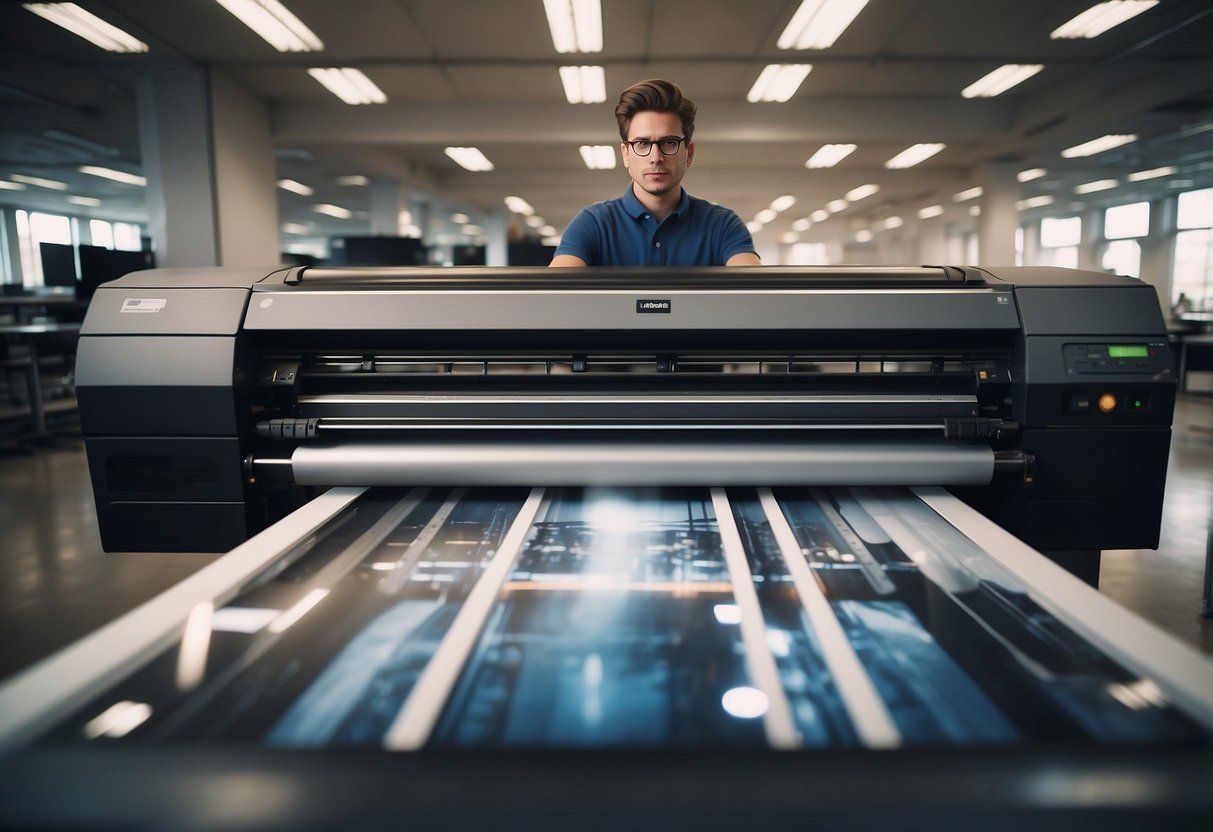
Understanding costs and key factors in large format printing services helps clients make informed decisions. Costs can vary based on material, equipment, and service quality, while cost-effectiveness and return on investment (ROI) are crucial for budget planning.
Estimating Costs
Estimating costs for large format printing involves several components. Key factors include:
- Material Type : Different substrates like vinyl, canvas, or paper can affect pricing. Each material has distinct costs.
- Print Size : Larger prints typically incur higher costs. Pricing usually increases with size increments.
- Design Complexity : Simpler designs are often cheaper. Complex designs may require more time and resources.
- Volume Discounts : Bulk orders can lead to significant savings. Many providers offer reduced rates for larger quantities.
Customers should also consider additional services, such as finishing options, which can impact the total cost. Obtaining multiple quotes can help in finding the best value.
Cost-Effectiveness and ROI
Cost-effectiveness in large format printing is vital for businesses. Clients should evaluate:
- Quality vs. Price : Higher quality may cost more but can lead to better customer satisfaction and loyalty.
- Turnaround Times : Fast service may come with a premium but can reduce downtime and increase sales opportunities.
- Durability : Investing in high-quality materials can prolong the lifespan of printed materials. This means fewer replacements and lower long-term costs.
Calculating ROI is essential. Clients can assess the impact of quality prints on their marketing efforts. Tracking sales increases after campaigns helps justify printing costs. Evaluating both immediate costs and long-term benefits leads to better financial decisions.
Customer Service and Support
Customer service and support are essential for large format printing services. Quality interaction and timely assistance can enhance the customer experience significantly.
Professional Service and Support
Providing professional service is crucial in the printing industry. Customers expect knowledgeable staff who are ready to assist with their specific needs.
Key elements include:
- Consultation : Offering expert advice on material selection and design options helps clients make informed decisions.
- Communication : Regular updates regarding project status build trust and ensure customers are informed throughout the process.
- Problem Resolution : Quick and effective solutions for any issues that arise can prevent delays and maintain customer satisfaction.
Investing in training for staff helps ensure that they are equipped with the skills needed to provide excellent support at every stage.
Meeting Customer Deadlines
Timely delivery is one of the main priorities for customers in large format printing. Meeting deadlines can significantly influence customer loyalty.
Strategies for compliance:
- Project Planning : Establish clear timelines and communicate these to clients. Use project management tools to track progress.
- Resource Management : Utilizing adequate equipment and skilled labor ensures that jobs are completed on time without sacrificing quality.
- Contingency Plans : Having backup plans for potential delays, such as supplier issues or equipment failures, ensures that deadlines can still be met.
Maintaining a strong focus on meeting customer deadlines not only enhances satisfaction but also strengthens business relationships.
Examples of Exceptional Large Format Projects
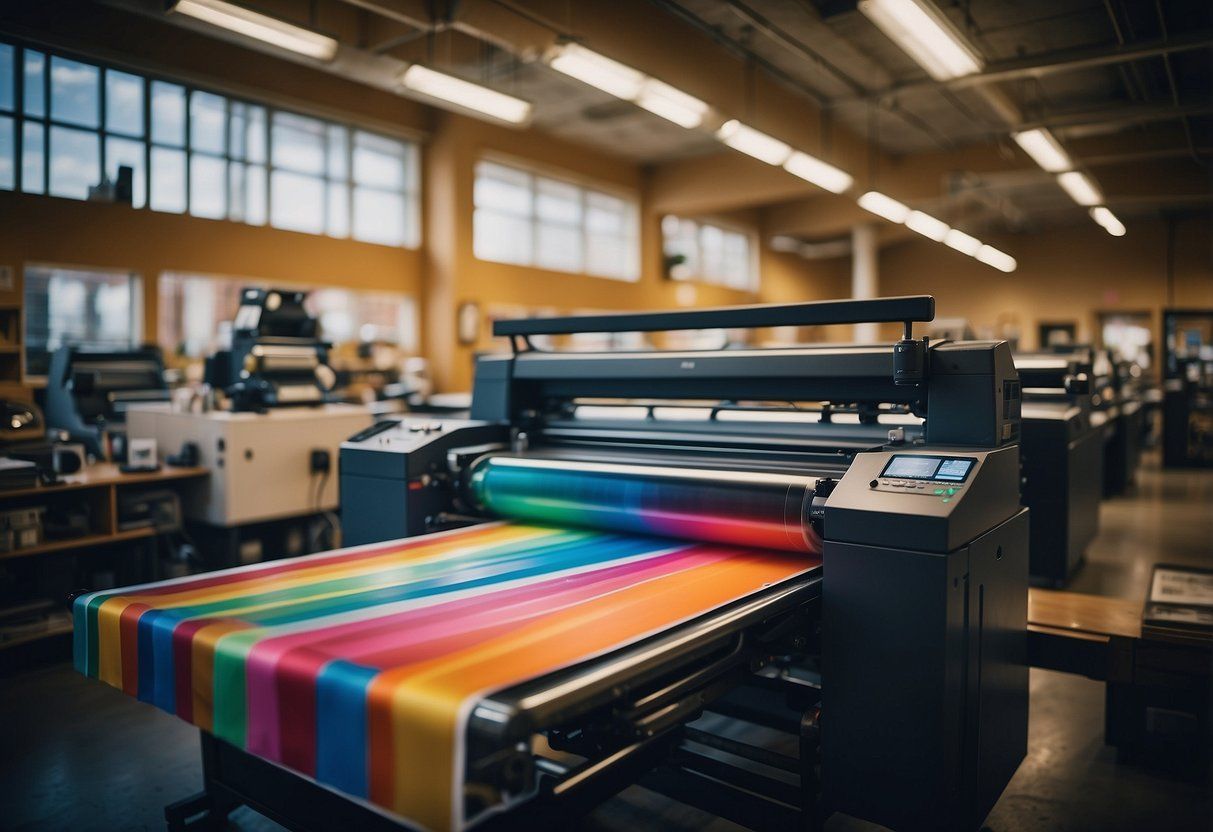
Large format printing plays a vital role in various environments, showcasing creativity and enhancing visibility. Different projects highlight how impactful this form of printing can be in public spaces, commercial settings, and event exhibitions.
Iconic Billboards and Building Wraps
Billboards remain one of the most recognizable large format printing applications. An example is the famous “Times Square” billboards in New York City. These bright, eye-catching displays attract millions of visitors annually. They often feature bold graphics and vibrant colors, making them an effective advertising tool for brands.
Building wraps are another stunning application. These full-building graphics turn structures into massive canvases. For instance, a prominent hotel in Las Vegas recently used a wrap to promote a new attraction. This approach captured attention from both pedestrians and vehicles alike.
Innovative Trade Show Booths
Trade shows offer an excellent platform for companies to showcase their products. Large format printing enhances booth design, helping brands stand out among competitors. Eye-catching backdrops and large banners create an inviting atmosphere.
A notable trade show project involved a technology company that used a combination of booth graphics and floor decals. This design not only highlighted their products but also guided visitors through the space. Incorporating interactive elements, such as touchscreens surrounded by large visuals, further engaged attendees.
Engaging Retail Environments
In retail, large format projects create immersive environments. Wall murals, for instance, transform retail spaces and enhance customer experience. A popular clothing brand recently created a mural showcasing its latest collection, which drew customers in and increased foot traffic.
Vehicle wraps also play a crucial role in retail marketing. A local restaurant invested in a vehicle wrap for delivery cars, promoting new menu items. This mobile advertisement reached a broader audience, making the restaurant more recognizable in the community.
Future Trends in Large Format Printing
Advancements in technology and a growing focus on sustainability are driving the evolution of large format printing. These trends are reshaping the industry and offering new opportunities for businesses.
Evolving Technologies
New technologies in large format printing are enhancing quality and speed. Eco-solvent inks are becoming popular for outdoor applications due to their durability and lower environmental impact. Techniques like inkjet printing are improving both precision and color vibrancy.
Adoption of automation is increasing efficiency. Automated cutting and finishing systems streamline the production process, reducing labor costs and production times. Businesses also embrace software advancements that integrate with printing systems for better workflow management.
The use of 3D printing in large format applications is emerging, allowing for creative displays and prototypes. This versatility expands the types of products that can be printed on large formats, catering to various market needs.
Sustainable Printing Practices
Sustainability is a major focus for the future of large format printing. Companies are adopting recyclable materials and biodegradable inks to reduce waste. These practices lessen the environmental impact while maintaining high-quality output.
Efforts to reduce energy consumption are also in play. Many printers are now energy-efficient , and some even utilize solar power . This shift not only lowers costs but improves corporate image.
In addition, the push for sustainable sourcing of materials is growing. Manufacturers are increasingly looking for suppliers who prioritize eco-friendly practices. This change reflects a broader commitment to sustainability in the printing industry, aligning with consumer demand for green solutions.
Frequently Asked Questions
This section addresses important questions about large format printing services. It covers types of projects, printer selection for art prints, features for vinyl production, giclee printer capabilities, profitability impacts, and reliability factors in large format printers.
What are the common types of projects suited for large format printing?
Large format printing works well for various projects. Common examples include banners, posters, trade show displays, and signage. These projects benefit from larger images and bright colors that attract attention.
What should one consider when choosing a large format printer for art prints?
When selecting a large format printer for art prints, resolution is crucial. High-quality prints require a printer with at least 1440 DPI. Additionally, the type of ink and media compatibility also plays a significant role in achieving the desired results.
Which features differentiate the best wide format printers for vinyl production?
The best wide format printers for vinyl production often include features likePrecision cutting capabilities and durable ink are essential. A printer with a wide color spectrum can also produce vibrant, lasting graphics that withstand various environmental conditions.
Can you describe the functional capabilities of a large format giclee printer?
Large format giclee printers are designed for high-quality fine art reproduction. They offer advanced color management systems, which ensure accurate color reproduction. These printers also work with various media types, allowing for textured or glossy finishes.
How do the various applications of large format printing impact its profitability?
Different applications of large format printing can affect profitability in various ways. Some markets, like signage and display graphics, often provide higher profit margins. Diversifying services can also create more opportunities for revenue growth.
What are the key factors determining reliability in large format printers?
Reliability in large format printers is determined by several factors. Build quality, maintenance routines, and the availability of parts all contribute to consistent performance. Additionally, user-friendly software can enhance reliability by simplifying operations and reducing errors.…
